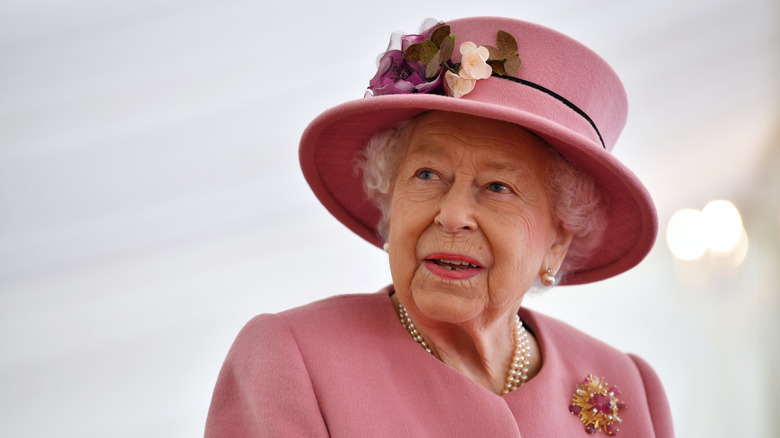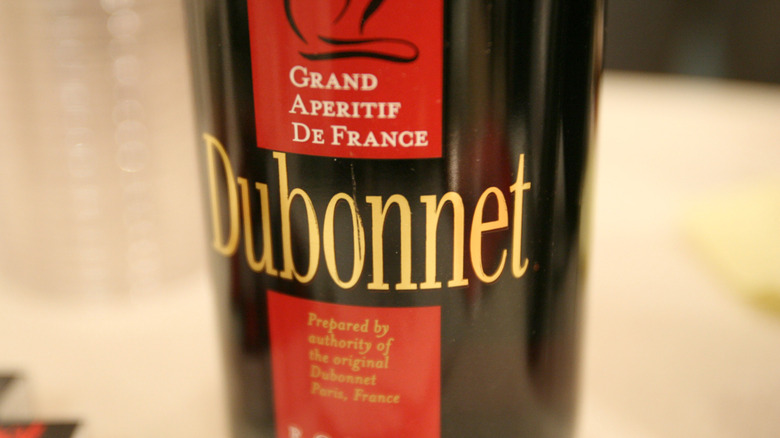What Was Queen Elizabeth's Cocktail Of Choice?
Cocktails come in many flavors, so everybody who drinks them has a favorite, whether because of a preference among liquors or it all boils down to the mixers. Some people enjoy a dirty martini while others reach for a classic Paper Plane. Great Britain's late Queen Elizabeth II had an elevated taste for alcoholic beverages and typically consumed a dry martini and a glass of sweet wine in the evenings.
However, there is another cocktail that caught her eye — she was known to have enjoyed drinking Dubonnet and gin. She considered it her favorite drink, and once instructed her page William Tallon to bring two small bottles of Dubonnet and gin to a morning picnic.
The rich, slightly sweet beverage is simple to make. Robert Large, retired Buckingham Palace yeoman of the cellars — yes, that was his real title — detailed how he prepared it for Queen Elizabeth in a 2007 BBC documentary. He described adding one-third gin and two-thirds Dubbonet to a short, square glass. Then he topped the drink with a thin slice of lemon, with no pits, and two large, well-shaped square ice cubes. He noted the importance of the ice cubes being square, so they wouldn't melt too quickly. Large also said nobody else in the palace had a preference for the drink: "It's only Her Majesty who drinks the gin and Dubonnet, and no one else."
What is Dubonnet?
Dubonnet is a dark red French aperitif that's been around since 1846. The blend was created by Sir Joseph Dubonnet, a Parisian wine merchant and chemist, using fortified red wine and quinine, which is derived from the cinchona tree and can be used as medicine; the drink was meant to prevent malaria among soldiers in North Africa. Today, it's made of a red wine base with herbs and spices, cinchona, and cane sugar.
As Queen Elizabeth preferred, Dubonnet is known to pair well with gin in cocktails. The gin's herbaceous flavor balances the aperitif's signature spicy, sweet taste. The queen preferred using Gordon's gin in her cocktails, though any gin would work. However, Dubonnet can also be enjoyed on its own — at room temperature or over ice — or mixed into other drinks.
If you want to stick with gin, the queen's favorite cocktail can be transformed into a more complex Opera cocktail by adding a splash of maraschino liqueur and two dashes of bitters. Rather than serving it in a basic glass, it's typically served in a martini glass.
Dubonnet can also be used to put a fun twist on a classic Manhattan. To do so, replace part of the vermouth with Dubonnet and bitters to add a richer taste. And for those who crave a simpler cocktail, the drink also works well in a spritz cocktail, which generally consists of white wine or Prosecco, aperitif or liquor, and a splash of soda water.

